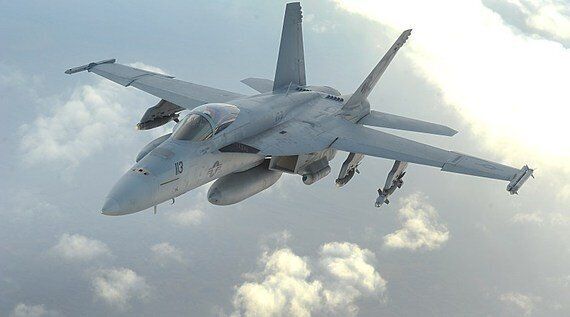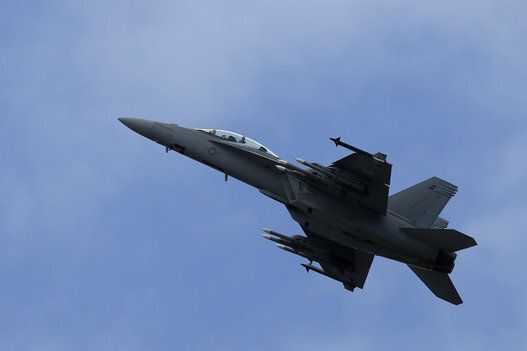
A U.S. Navy F/A-18 Super Hornet from VFA-31 fly's a combat patrol over in Afghanistan on Dec. 15 2008. (Photo: Staff Sgt. Aaron Allmon)
The Liberal government intends to buy the Boeing F/A-18E Super Hornet, according to multiple sources.
Bridging the gap between the aging CF-188 Hornets and a future multirole fighter, the Super Hornet is ideal for Canada. Last April, I wrote on how the Super Hornet is what Canada needs in an editorial published on the Huffington Post Canada.
Canada should replace the fleet of aging CF-18s and operate the Super Hornet until 2040, when drones will most likely take over the skies.
According to John McKay, parliamentary secretary to the defence minister, a decision is coming "soon, rather than later" and a small amount of Super Hornet would be purchased to smooth the transition toward a fifth-generation stealth fighter.
McKay was quick to blame the previous Conservative government for failing to replace Canada's fighter aircraft.
"Unfortunately, the last five years have been a bit of a loss, and as a consequence, there is a developing capability gap which needs to be managed," McKay said. "We have obligations to NATO. We have obligations to NORAD. We have obligations to our own defence and to expeditionary matters."
However, in 2014, the Conservative government announced it was upgrading the CF-18s to keep them in the air until 2025. A project estimated at about $400 million, it would've given time to find the best alternative, according to the Conservatives, for replacement -- the F-35.
Canada has been cannibalizing old CF-18s for parts to keep the flying ones in order, and have been doing so for years.
That said, I don't believe Canada needs a stealth fighter. Instead of buying a small number of Super Hornets to fill the void in the Royal Canadian Air Force, Canada should replace the fleet of aging CF-18s and operate the Super Hornet until 2040, when drones will most likely take over the skies.
Canada's defence policy cannot justify the use of a stealth fighter, especially now that it is under review. A multirole aircraft capable of conducting airstrikes and interception missions is critical for Canadian operations. The F-35A is clearly not ideal for these two types of missions.
According to Lt.-Gen. Michael Hood, the Royal Canadian Air Force (RCAF) commander, the RCAF is in no rush to replace the CF-18 who is scheduled to be retired in 2025.
Hood might be right, but Canada has been cannibalizing old CF-18s for parts to keep the flying ones in order, and have been doing so for years. Using this strategy for the next nine years is clearly not a good alternative -- buying new aircraft is.
Canada cannot wait any longer and needs to quickly move on a replacement aircraft.
Supporting NATO in Eastern Europe and conducting Arctic patrols take a heavy toll on our fighter aircraft and having a fleet of new multirole aircraft would enable Canada to support both its allies and keep the north free of intrusion with better efficiency.
The Liberal government emphasizes on the fact that Canada cannot wait any longer and needs to quickly move on a replacement aircraft. Although I don't agree on most of their politics, I am fully supporting this statement and I believe the RCAF is desperately in need of a new fighter aircraft.
The Super Hornet is by far the best alternative for Canada and will keep the RCAF operational for the next 25 years -- a critical timeline for future drone warfare. By then, Boeing and Lockheed Martin will most likely have some workable unmanned fighter drones; a great option for Canada to keep constant surveillance in the Arctic and its coasts.
Until then, RCAF pilots deserve a better aircraft and the Liberal government understands the urgency of the matter. Boeing has a production line ready to support Canada and have been a great defence industry partner for years.
Follow HuffPost Canada Blogs on Facebook
MORE ON HUFFPOST:
